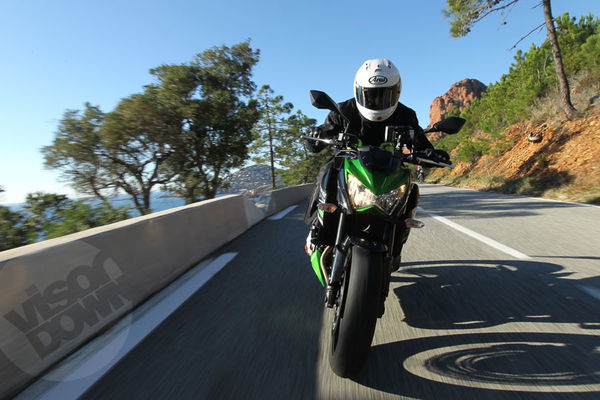2013 Kawasaki Z800 review
Wading into the beefy middleweight sector with an extra 58cc but carrying a few more pounds too. Is the Z800 a knockout?


THE Z750 has been a nice little earner for Kawasaki, with almost 160,000 of them sold since its launch in 2003.
I remember riding the first version back in 2004 and falling for its simple charms. In a sea of naked rev-hungry 600s, the Z750 boasted a refreshing amount of muscle - certainly enough to highlight the limitations of the suspension and brakes - but its limitations were really the key to its charm. You didn’t need to go 100mph to feel like you were up no good. On a Z750 you were almost always up to no good.
At under £5,500 new, the middleweight Zed got modified more than your MP’s expenses.
Kawasaki, keen not to mess with a successful formula, have given the original bike light-touch updates over the years. The less said about the half-faired version in 2005, the better. 2007 saw a larger update with a restyle, slightly larger tank capacity, more power and more weight: 5 extra bhp but 12kg heavier. That doesn’t sound like a fair deal.
Then came the Z750R, featuring a few trick bits to get the party started, including the front-end of the Z1000, a nip here and a tuck there. All in all, a sure sign the Z750’s days were numbered.
The 600s that the original Z750 had trounced spawned new bigger brothers. The rulebook had been lobbed out. Sleeves were rolled up, bloody fists were on show. Yamaha’s FZ8, Suzuki’s GSR750, even Triumph’s Street Triple were all scrapping out this new capacity fight in a territory that was previously no-man’s land.
Kawasaki weren’t about to get beaten at their new game, so the Z800’s capacity hike was predictable if not a little lazy.
Can you call the Z800 an all-new bike? The chassis is based on the Z750R, with extra bracing around the engine, the suspension’s almost identical, the seat height is marginally higher and there are two extra teeth on the rear sprocket. The four-pot brakes are new and the styling, while fresh, is reassuringly familiar. If it weren’t for the capacity hike and therefore new name, I’d call it a model update, not a new model.
Power is up from 106 to 113bhp and torque is up to 60ftlb (a 2011 ZX-10R puts out 80ftlb). Hardly the most groundbreaking figures to flow from 806cc but the figures that stand out are fuel capacity: down from 18.5 litres to 17 litres and weight: up 5kg to 229kg drippin’ wet. Ouch.
Sat on the Z800, the first thing you notice is the expanse infront of you. The new compact clocks and lower headlight are almost invisible. When you’re in the riding position, with your hands on the wider-set bars, there’s nothing infront of you. On the move, the new compact clocks sit somewhere beneath your chin bar. I like that, but if you like to keep tabs on your speed, you probably won’t.
You don’t notice the extra weight nor can you feel the extra power but what you do feel is how smooth the ride is. This is a long way from the original Z750, where the front end felt soft and surface changes in the road felt magnified when the pace picked up.
The ride quality feels better than the suspension on a ‘budget’ bike should be. You don’t get fully adjustable suspension on the Z800 but Kawasaki are confident you won’t need it. After surveying existing customers and riders of competitor’s bikes, they know most don’t go near the suspension and fully adjustable suspension will add to the cost, but nothing more. The front and rear both have adjustable rebound and preload, it felt well setup.
The brakes aren’t radially mounted like on the Z750R but they’re still four-pot, gripping onto 310mm discs, 10mm larger than on the Z750R. And grip they do! The initial bite is strong, at first I thought it was my cumbersome fingers on the lever which had been set to maximum span, but bringing the lever back in didn’t change anything. They have a somewhat harsh initial grab but plenty of stopping power.
The whole front-end works well as a package, the feel and feedback from the front suspension is superb and even though the brakes have real bite, nothing stands out as being a weak link. Let’s not forget that, at 229kg, the Z800 isn’t a racing snake and that weight helps the bike feel stable and planted.
Where you feel the weight is in quick changes of direction, from a fast turn-in to flicking from one edge of the tyre to the other. Leant right over, the feel is good but with the initial input into the bars to pick the bike up, you notice the trade-off to a planted front-end is the mass you’re dealing with.











